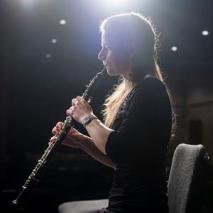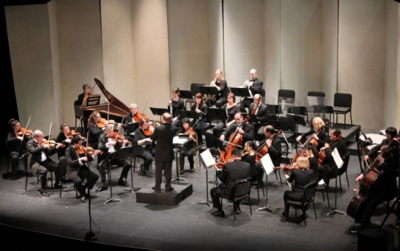Casual listeners of the music of Ottorino Respighi (The Pines of Rome, The Fountains of Rome, The Birds) are generally inclined to consider his style a product of the 19th Century with thematic suggestions and color from Renaissance, pre-Baroque, and Baroque music. Many are amazed to learn that his professional life was completely in 20th Century—born 1879, died 1936. However, instead of sounding old-fashioned or dated, his music sparkles with the life and vividness that those other periods suggest, but with a solid modernity that sets them apart.
Deeply interested in older music, Respighi drew on Renaissance and Baroque tunes and styles in three suites composed in 1917, 1923, and 1932, titled Ancient Airs and Dances. The third of these, heard on Sunday’s concert, was arranged for strings only and was influenced by lute and guitar pieces by Besard, Ludovico Roncalli, Santino Garsi da Parma and other anonymous composers.
Although the Respighi and the closing Tchaikovsky Serenade for Strings bookend the concert with strings-only works, woodwinds have a notable featured spot as well. KSO Principal Oboe Claire Chenette will join the chamber orchestra for Mozart’s Oboe Concerto in C Major, K. 314. In a similar fashion with other Mozart works for solo instruments, the composer recycled the concerto as the basis for his Flute Concerto No. 2 in D Major in an attempt to offer it as a new work to the flutist Ferdinand de Jean, who had commissioned a number of flute pieces. Although the oboe version was performed heavily around the years of its composition, the score was subsequently lost and Mozart’s subterfuge went undiscovered until the score was found in Salzburg in 1920.
with strings-only works, woodwinds have a notable featured spot as well. KSO Principal Oboe Claire Chenette will join the chamber orchestra for Mozart’s Oboe Concerto in C Major, K. 314. In a similar fashion with other Mozart works for solo instruments, the composer recycled the concerto as the basis for his Flute Concerto No. 2 in D Major in an attempt to offer it as a new work to the flutist Ferdinand de Jean, who had commissioned a number of flute pieces. Although the oboe version was performed heavily around the years of its composition, the score was subsequently lost and Mozart’s subterfuge went undiscovered until the score was found in Salzburg in 1920.
Although Tchaikovsky’s Serenade for Strings in C Major, Op. 48, was written in 1880 at the same time as his 1812 Overture, the two works have little in common save their notable popularity. Of the serenade, Tchaikovsky wrote: “… I wrote from inner compulsion. This is a piece from the heart, and so, I venture to hope that this work is not without artistic qualities.”
The work is in four movements: 1) Pezzo in forma di sonatina: Andante non troppo — Allegro moderato; 2) Valse: Moderato — Tempo di valse; 3) Élégie: Larghetto elegiaco; and 4) Finale (Tema russo): Andante — Allegro con spirito. The emotional center of work, though, comes from the elegiac third movement, one of the most beautiful sections of music in Tchaikovsky’s work.
Knoxville Symphony Chamber Orchestra: “Tchaikovsky Serenade for Strings”
Sunday, April 2 at 2:30 PM
Bijou Theatre, Downtown Knoxville
Tickets
James Fellenbaum, conductor
Claire Chenette, oboe
Respighi: Ancient Airs and Dances, Suite 3
Mozart: Oboe Concerto in C Major, K. 314
Tchaikovsky: Serenade for Strings in C Major, Op. 48





